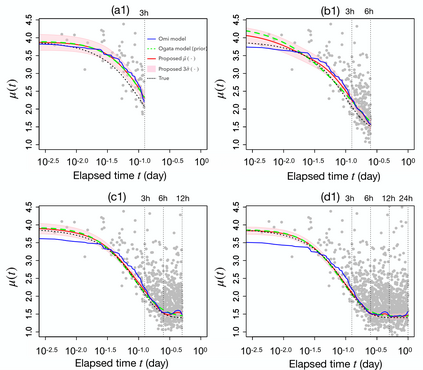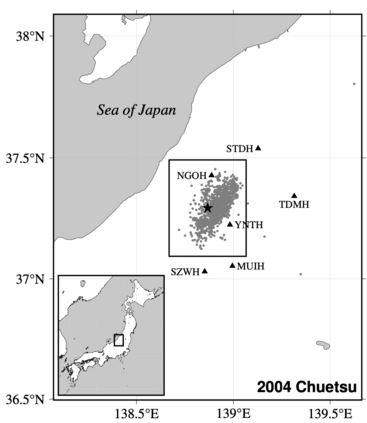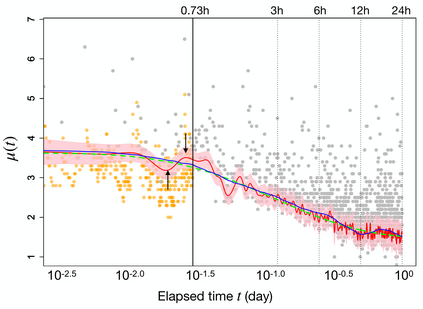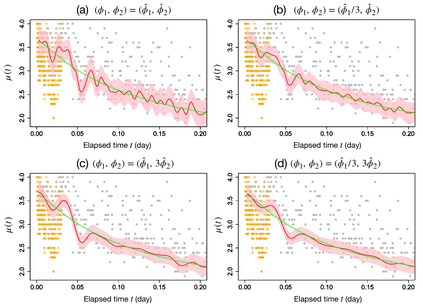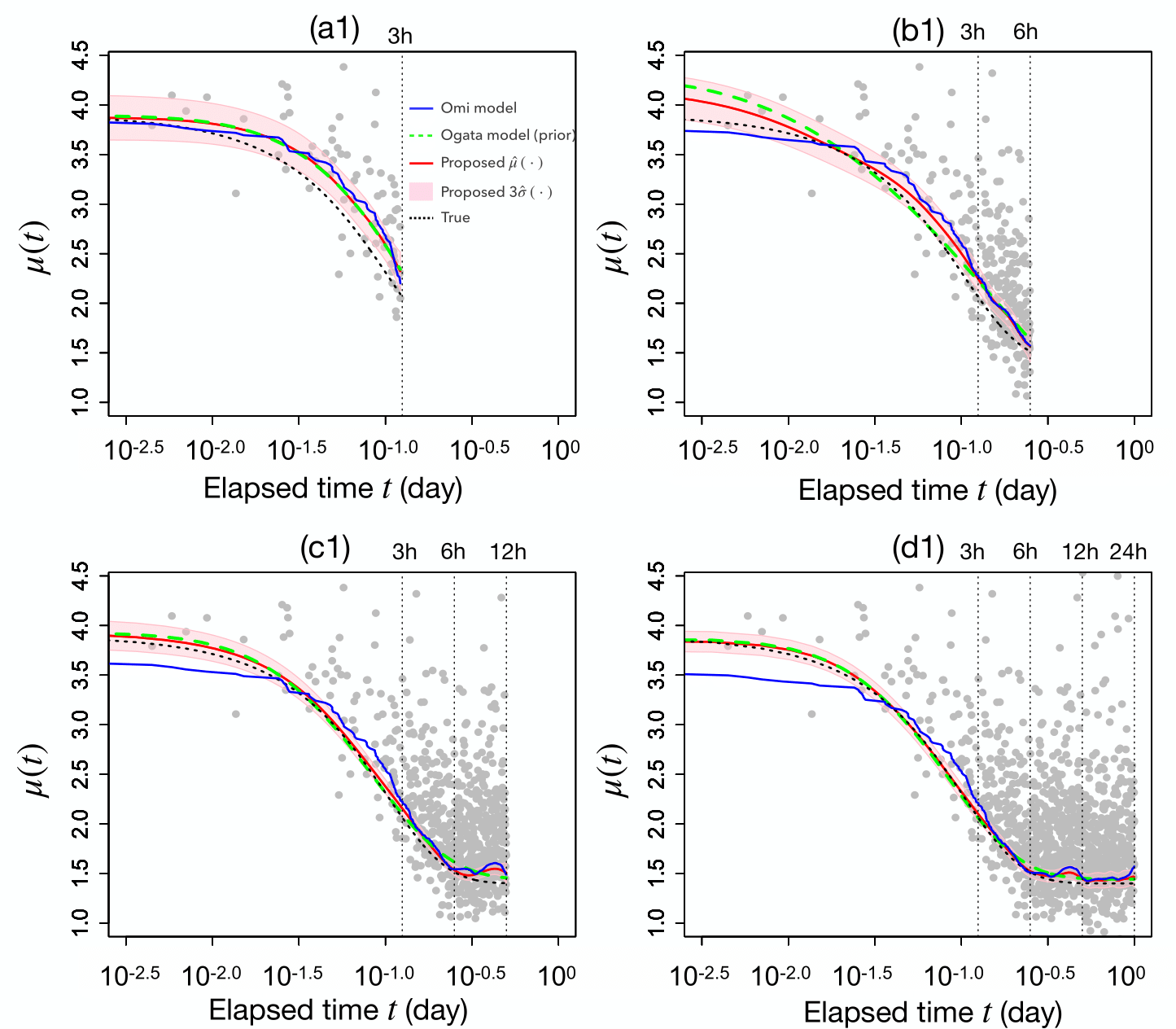Uncovering the distribution of magnitudes and arrival times of aftershocks is a key to comprehend the characteristics of the sequence of earthquakes, which enables us to predict seismic activities and hazard assessments. However, identifying the number of aftershocks immediately after the main shock is practically difficult due to contaminations of arriving seismic waves. To overcome the difficulty, we construct a likelihood based on the detected data incorporating a detection function to which the Gaussian process regression (GPR) is applied. The GPR is capable of estimating not only the parameters of the distribution of aftershocks together with the detection function but also credible intervals for both of the parameters and the detection function. A property that distributions of both the Gaussian process and aftershocks are exponential functions leads to an efficient Bayesian computational algorithm to estimate the hyperparameters. After the validations through numerical tests, the proposed method is retrospectively applied to the catalog data related to the 2004 Chuetsu earthquake towards early forecasting of the aftershocks. The result shows that the proposed method stably estimates the parameters of the distribution simultaneously their credible intervals even within three hours after the main shock.
翻译:由于地震波的污染,几乎很难在主要冲击发生后立即确定余震次数。为了克服这一困难,我们根据检测到的数据构建了一种可能性,该数据包含一种检测功能,高山进程回归(GPR)是应用高山进程回归(GPR)的检测功能。GPR不仅能够估计余震分布参数以及检测功能的参数,而且能够预测参数和检测功能的可靠间隔。高山进程和余震的分布具有指数性功能,导致高效的巴伊西亚计算算法来估计超参数。在通过数字测试验证后,拟议的方法被追溯地应用于与2004年中秋秋地震有关的目录数据,以早期预报余震。结果显示,拟议的方法在主要冲击发生后三小时内对分布的可靠间隔参数同时进行精确估计。

